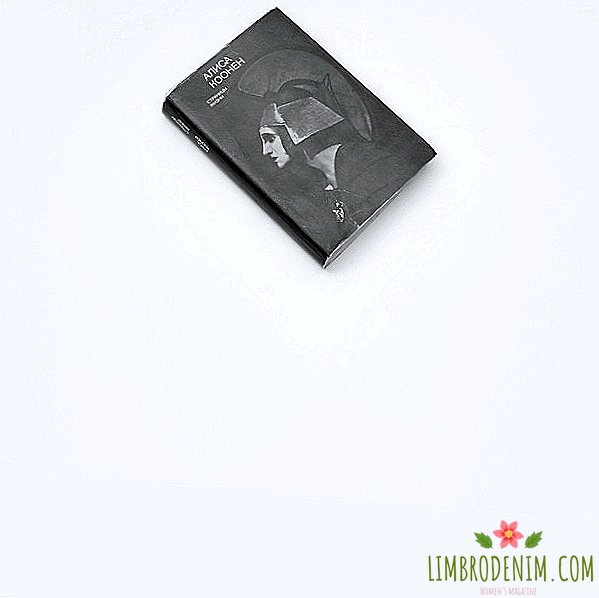Subscribe: Stripes and slogans with double bottom
More recently, tattoos with hieroglyphs were at the peak of popularity and even considered a call to the bored classics. Often, their meaning remained a mystery, not only to others, but also to the owner himself - in the first place were more aesthetic considerations. A similar story was with English inscriptions on clothes in non-English-speaking countries - ignorance of the language often led to curious cases. It seems that today there is a turn in the opposite direction and now the content is more important than the actual appearance. Fashionable experiments with incomprehensible inscriptions are a thing of the past, and the cunning of slogans in a non-native language has already brought up a lot of caution in many. And yet, there are fewer cases when the meaning inherent in the clothes played a cruel joke with the owner.

Putting on a T-shirt with a certain text, we literally put our signature under the slogan
Literally the other day, the web was discussing the story of what happened in Kaliningrad: local governor Anton Alikhanov appeared at an event in a jacket with a Nazi flag and a chevron, which depicted Andrei Parshin, popular among radical nationalists. It turned out that the hero of the day did not mean anything “such”. Jacket, as Alikhanov told reporters "Medusa", he gave friends; He paid no attention to the flag badge, and received a chevron with Parshin as a compliment to the purchase in the store and did not even know what it meant. The official had to apologize and promise to continue to pay more attention to his own wardrobe.
Today, when mass fashion is looking for ideas, referring, often indiscriminately, to the style of subcultures, errors like this are frequent, but this is no less painful. Clothing has always served not only to protect us from the dangers of the external environment, but also to inform others about its owner. Any outfit, even the simplest, like a normal combination of jeans, t-shirt and sneakers, is a kind of statement, which, however, can be interpreted differently. But things with "speaking" signs of multiple interpretations no longer allow: elements borrowed from the subculture style or at a certain time assigned by a specific community inevitably refer to it. For example, the text on a T-shirt - putting it on, we literally put our signature under the slogan.
Of course, no one will forbid you to wear a T-shirt with a call for "We should all be feminists" from the Dior spring collection, a top with the inscription "Immigrant" from the last show Ashish or a Monki cap with the slogan "Grl Pwr". But if you do not agree with the promise invested in each of the things by its creator, what is the use of this? With slogans, however, it is difficult to make a mistake: they express the position most clearly and get lost in double meanings and cultural labyrinths in this case is almost impossible. Although T-shirts with offensive inscriptions like “Cunt” or “Bitch” feminist artists still actively wear: this is how they turn dismissive curses against them into their own weapons, make them part of their ironic visual language - and this is an example how the new context changes perception.
Things that have become political symbols, of which there were especially many last year, are doubly difficult to handle. If you are not a supporter of Trump's policy, wear his red cap "Make America Great Again", it would be naive to argue in the spirit of: "Well, this is just fun," - the simple-looking cap now has its own meaning during the election race in the United States. The same with pins, which became symbols of disagreement first in Britain after Brexit, and then in America after the announcement of the election results. They are pinned to their chests in order to find "their own" in the crowd - and to show that the minority is not so small - and that hope is alive, while there are still people around who share your values and attitudes.
Not only clothing characterizes its owner, but vice versa: those who wear the brand’s clothes largely shape the brand image.
And when the fashion industry exploits these symbols - glossy portals make lists of luxury jewelers in the form of the same pins or, for example, show how to properly “style” a Tramp's cap - this causes an explainable negative reaction. First of all, because it looks like exploitation, depreciation and an attempt to earn extra points on the wave of attention to a topic that is serious and painful for too many. Therefore, the appearance of Kim Kardashian, dressed in a sweatshirt with a sickle and a hammer, is outraged by people whose life was somehow connected with the Soviet Union. The question of whether it is ethical to turn historically loaded symbolism into a stylish accessory remains open - for example, they talk about this at Calvert Journal, which The Guardian also picked up.
The rule, voiced above, works in both directions. Not only clothing characterizes its owner, but vice versa: those who wear the brand’s clothes largely shape the image of the brand. For example, Italian Stone Island, like a number of British brands, in the 80s practically became the uniform of English football hooligans, among whom racist sentiments were widespread, and these associations did not weaken with time. "Like it or not, Stone Island is inextricably linked to hooliganism, and you can see that same patch with a compass everywhere on the football field - from Middlesbrough to Moscow," wrote Alec Leach, editor of Highsnobiety. The same Fred Perry still can not get rid of associations with ultra-right extremists. Alas, whether you like it or not, by buying a jacket with a “compass”, a polo with a wreath or sneakers with a letter, you buy not only a thing, but also a part of the brand’s history, its reputation and identity as a whole.
They try to firmly protect their borders both brands and subcultures - the latter are opposed to “posers” especially fiercely, although, as a rule, it is already in vain and late. So, last fall, Jake Phelps, the founder of the bible of skateboarding Thrasher Magazine, once again took up arms against the "invaders". In an interview with Hypebeast, Phelps told him how he disliked Justin Bieber and Rihanna wearing Thrasher T-shirts, having no relation to skateboarding, but simply because it was fashionable. But whether he wants to or not, this choice of pop stars who have the full right to make a decision and take responsibility for it, writes a new chapter in the history of the brand.
Ten years ago it was difficult to imagine that such close attention would be given to identification marks on clothes. But right now, due to openness, when not only each of your statements, but also a T-shirt or a patch on a jacket chosen in the morning, can be tracked once or twice, you need to be a little more conscious in your choice. In the era of social networks, you have to answer not only for words, but also for what kind of message your clothes carry. This does not mean that we should censor any small decisions, but it definitely imposes a new responsibility on us.
Photo: Hyein Seo / Facebook, KM20





